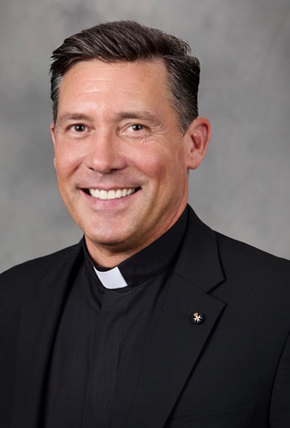
Liturgical Beauty and Symbolism: Inauguration Mass of Pope Leo XIV
Monday, May 19, 2025
*Fr. Richard Vigoa
Yesterday, in the heart of Rome and before the eyes of the world, Pope Leo XIV was solemnly inaugurated into his ministry as Bishop of Rome, successor of St. Peter, and Supreme Pontiff of the Universal Church. The ceremony, held in St. Peter’s Square, was not simply an act of protocol or pageantry. It was a deeply theological and liturgical moment that bore witness to the Church’s understanding of beauty, tradition, and mission.
Since then, I’ve been asked many questions -especially by young people- about the symbols they saw: “What is the Pope wearing?” “What’s that woolen band around his shoulders?” “Why is the ring called the fisherman’s ring?” These questions are not trivial. They reflect a deeper hunger to understand what the Church celebrates. And the answer, simply put, is this: what we see in the liturgy reveals what we believe.
The world is watching the Church right now. Google searches for “how to become Catholic” have surged by 33% since the conclave. People are curious. Moved. Drawn in. And much of that curiosity has been awakened not just by words, but by the sheer beauty of what they saw during the Mass- beauty that points beyond itself to God.
As the Fathers of the Second Vatican Council affirmed, “the liturgy is the summit toward which the activity of the Church is directed” and “the font from which all her power flows” (Sacrosanctum Concilium, 10). This inauguration Mass wasn’t a coronation, but a Eucharistic celebration, centered on the Word of God and the sacrifice of the altar. Still, the vesture and ritual carried rich significance.
The pallium- perhaps the most visibly unique garment Pope Leo wore- is a narrow band of white wool, adorned with black crosses and three pins. Made from the wool of lambs blessed each year on the Feast of St. Agnes, it represents the pope’s role as shepherd. But not just any shepherd. A shepherd who carries the sheep on his shoulders, as Christ does in the Gospel.
Metropolitan archbishops, including our own archbishop, also wear the pallium. For them, it signifies their unity with the Pope and their pastoral authority within their ecclesiastical province. It is a powerful sign that their leadership is not isolated but rooted in communion with the successor of Peter and in service to the flock entrusted to them.
The three pins inserted into the pallium are not mere decoration. They evoke the nails of the Crucifixion, a sobering reminder that to shepherd the Church is to lay down one’s life.
Next came the presentation of the Fisherman’s Ring. This gold ring, engraved with the image of St. Peter casting his net, roots the Pope’s authority in the vocation of the first disciple who said, “Depart from me, Lord, for I am a sinful man” (Luke 5:8). The ring is not just a sign of papal power- it is a reminder of the burden to be a fisher of souls.
Historically, the ring was used to seal papal documents. Today, it remains a visible expression of the pope’s continuity with Peter, whose ministry was forged not in ambition, but in forgiveness and fidelity.
In an age of suspicion of symbols, why should we care about what the Pope wears? As Pope Benedict XVI once said, “Beauty is not mere decoration but an essential element of the liturgical action, since it is an attribute of God himself and his revelation” (Sacramentum Caritatis, 35).
Vestments are not costumes. They are theological statements. They speak to the eyes what the liturgy speaks to the heart. The cope, the mitre, the pallium, the ring reveals the identity and mission of the one who wears them. When the Pope appears in vestments of splendor, it is not to glorify himself, but to point to the majesty of Christ who clothes us in grace.
In 1294, when the humble hermit Pietro del Morrone was elected pope- later known as Pope Celestine V- he arrived barefoot for his coronation, dressed in his monastic habit. The cardinals insisted he wear the traditional papal vestments. He reportedly wept as they clothed him, overwhelmed not by pride, but by the weight of the office and the symbolism.
That story reminds us that what the pope wears is not about him. It’s about what the Church believes, and it’s about how we communicate that belief to a world searching for meaning.
Yesterday’s Mass was not just a historical event. It was a liturgical proclamation: Christ still calls, the Spirit still moves, and the Church still shines.
May Pope Leo XIV, clothed in humility and truth, be a shepherd after the heart of the Good Shepherd. And may we, inspired by the beauty of our liturgy, become ever bolder in sharing the Gospel with a world that is watching.


Comments from readers